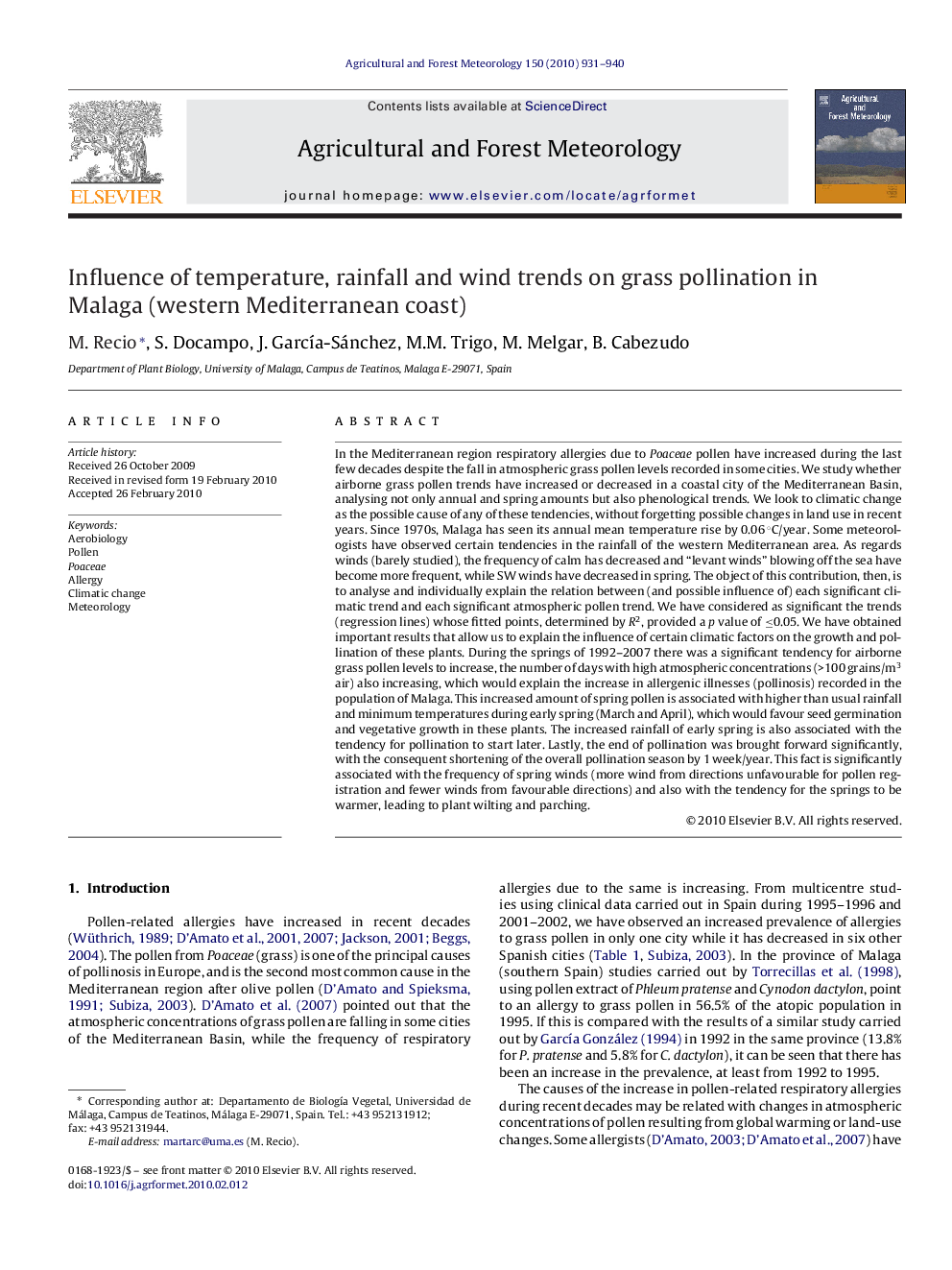| کد مقاله | کد نشریه | سال انتشار | مقاله انگلیسی | نسخه تمام متن |
|---|---|---|---|---|
| 82462 | 158397 | 2010 | 10 صفحه PDF | دانلود رایگان |

In the Mediterranean region respiratory allergies due to Poaceae pollen have increased during the last few decades despite the fall in atmospheric grass pollen levels recorded in some cities. We study whether airborne grass pollen trends have increased or decreased in a coastal city of the Mediterranean Basin, analysing not only annual and spring amounts but also phenological trends. We look to climatic change as the possible cause of any of these tendencies, without forgetting possible changes in land use in recent years. Since 1970s, Malaga has seen its annual mean temperature rise by 0.06 °C/year. Some meteorologists have observed certain tendencies in the rainfall of the western Mediterranean area. As regards winds (barely studied), the frequency of calm has decreased and “levant winds” blowing off the sea have become more frequent, while SW winds have decreased in spring. The object of this contribution, then, is to analyse and individually explain the relation between (and possible influence of) each significant climatic trend and each significant atmospheric pollen trend. We have considered as significant the trends (regression lines) whose fitted points, determined by R2, provided a p value of ≤0.05. We have obtained important results that allow us to explain the influence of certain climatic factors on the growth and pollination of these plants. During the springs of 1992–2007 there was a significant tendency for airborne grass pollen levels to increase, the number of days with high atmospheric concentrations (>100 grains/m3 air) also increasing, which would explain the increase in allergenic illnesses (pollinosis) recorded in the population of Malaga. This increased amount of spring pollen is associated with higher than usual rainfall and minimum temperatures during early spring (March and April), which would favour seed germination and vegetative growth in these plants. The increased rainfall of early spring is also associated with the tendency for pollination to start later. Lastly, the end of pollination was brought forward significantly, with the consequent shortening of the overall pollination season by 1 week/year. This fact is significantly associated with the frequency of spring winds (more wind from directions unfavourable for pollen registration and fewer winds from favourable directions) and also with the tendency for the springs to be warmer, leading to plant wilting and parching.
Journal: Agricultural and Forest Meteorology - Volume 150, Issues 7–8, 15 July 2010, Pages 931–940